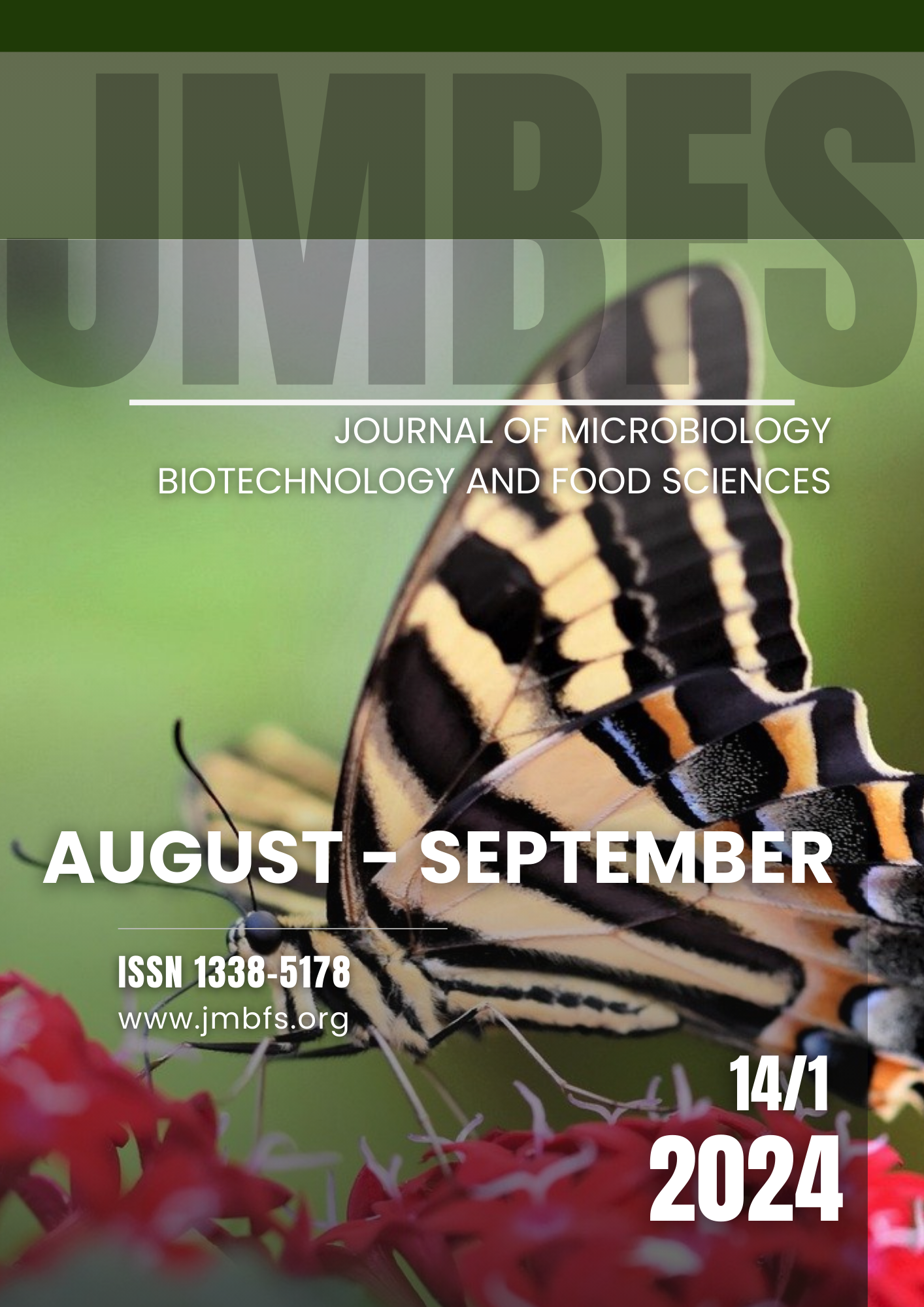ANTIBACTERIAL POTENTIAL AND MICROBIOLOGICAL QUALITY OF HONEY FROM SLOVAKIA
DOI:
https://doi.org/10.55251/jmbfs.11002Keywords:
honey, antibacterial effect, agar-well diffusion, bacteria, filamentous fungi, yeastAbstract
In this study, the antibacterial activity of 10 honeys at three concentrations 50%, 25%, and 12.5% was tested against two G- and two G+ strains, also the microbiological quality of the honeys in terms of the representation of total count of bacteria, coliforms, yeasts, and filamentous fungi was evaluated, and micromycetes to the species level were identified. Antibacterial activity of the honeys was assayed using well diffusion method, determination of microbial groups by the pour plate method and diversity of mycobiota in honey according to macro- and micromorphological characteristics. Results showed the antibacterial effects of Slovak honey collected from the Spiš region, against bacterial strains Escherichia coli, Pseudomonas fluorescens, Enterococcus faecalis, and Staphylococcus aureus, which are among the most common bacteria responsible for nosocomial infections. We found that honeydew honey was very effective against E. coli and S. aureus, rapeseed honey against P. fluorescens, and mixed honey (no. 10) against E. faecalis. Staphylococcus aureus was the most susceptible bacteria tested for all honeys. The presence of both yeasts and molds was detected in 3 honey samples at concentrations ranging from <4x101 to 3.6x101 CFU/g, while the total count of bacteria was detected in 9 samples at concentrations ranging from 2.3x101 to 3.6x102 CFU/g (in 1 sample, the occurrence of microorganisms was not recorded even at the lowest dilution of 10-1). Coliforms were not isolated. A total of 3 strains belonging to the Aspergillus section Nigri were identified. The microbiological analyses of the samples indicates that the honeys were produced, processed and stored in accordance with the rules of good hygiene practice.
Downloads
Downloads
Published
How to Cite
Issue
Section
License
Copyright (c) 2023 Sona Felsociova

This work is licensed under a Creative Commons Attribution 4.0 International License.
All papers published in the Journal of Microbiology, Biotechnology and Food Sciences are published under a CC-BY licence (CC-BY 4.0). Published materials can be shared (copy and redistribute the material in any medium or format) and adapted (remix, transform, and build upon the material for any purpose, even commercially) with specifying the author(s).





